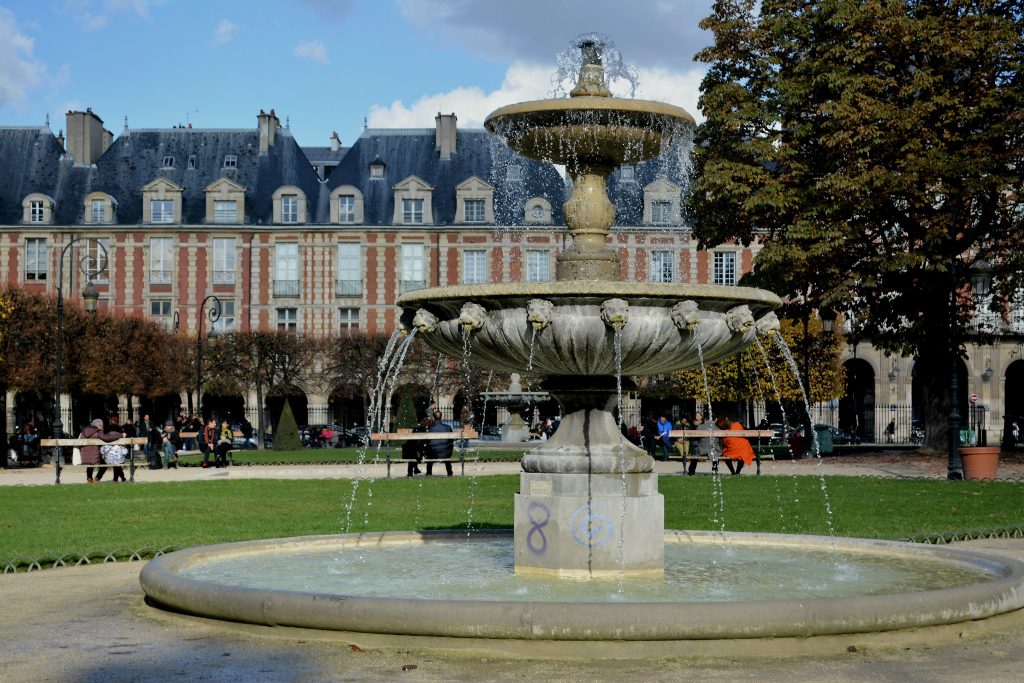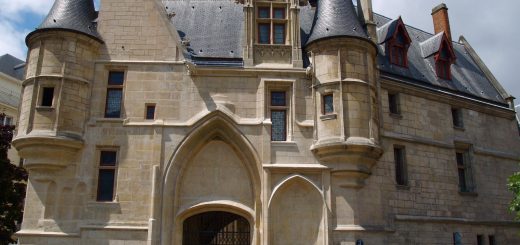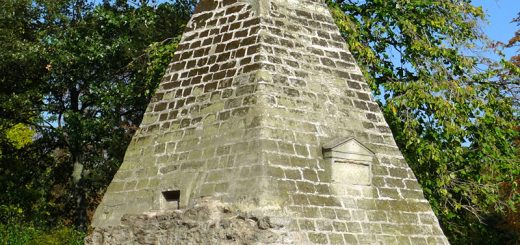The royal squares
The royal squares are a creation of the 17th century. To gauge how new this is, just look for what might look like a square on this map of Paris that dates back to 1550.

The Place de Grève, in front of the town hall (upper left quarter) is an exception. Elsewhere, the city is dense, constructions are almost everywhere.
The king Henry IV, the precursor
The first to break with this urbanism inherited from the Middle Ages is Henri IV. He launched two projects: Place Dauphine, in the far west of Ile de la Cité, and Place des Vosges (at the time known as Place Royale) located in the Marais district.

These squares are not conceived as a way to improve traffic flow like the modern squares. The idea is to build recreational areas, allowing for strolls or games. They are almost closed and special attention is paid to the uniformity of the buildings bordering them. This is obtained by imposing very precise specifications on future owners who wish to build their hotel there.
Place Dauphine has undergone major changes. Not only has it lost its uniformity, but one side was even removed in 1872. Only the two pavilions overlooking the Pont Neuf give an idea of the original architecture. On the other hand, the Place des Vosges has kept all its charm. You can still admire all of the Louis XIII-style buildings made of stone and brick. In addition, it has stayed away from traffic and has a large square, which makes it very pleasant.
The heyday under Louis XIV
The royal square takes on a new dimension under Louis XIV, and directly serves the image of the sovereign.
The first achievement is the Place des Victoires. Today there is an equestrian statue in its center, but this one dates from 1822. The original statue represented the king in full standing, crushing a cerberus representing the Quadruple-Alliance, defeated in the Dutch War. To ensure that the message was clear, the 4 nations that made up the alliance were also individually represented in allegory form at the bottom of the pedestal, as defeated. Ironically, only these captives survived the revolution, they are still visible in the Louvre.

The second royal square dedicated to Louis XIV is the current Place Vendôme. However, the royal statue was replaced by a column under Napoleon.

The remarkable point of these squares is that everything is done to highlight the statue of the sovereign: uniform facades, studied proportions, perspectives of the streets and even the general shape of the square. On the Place des Vosges, it is not that easy to find the statue of Louis XIII. On the Place des Victoires, it is unmissable.
From there, the royal squares spread throughout France. Each city tried to have its own. These are the current places Bellecour in Lyon, Stanislas in Nancy, de la Liberation in Dijon, etc.
At this time, facades were often built directly, and future owners just had to connect their mansion to it. Thus, the aesthetics and uniformity are perfectly mastered.
Place Louis XV, the decline?
Louis XV signed the last of these royal Parisian squares with the one which is today the Place de la Concorde. Before the famous obelisk, there was therefore a statue of Louis XV.

Source BNF / Public Domain
However, the financial means available for land purchases and construction were no longer the same. So the square took place on land that already belongs largely to the king, but which was on the outskirts of the city. Moreover, the square was devoid of constructions on the majority of its periphery. It was simply bordered by ditches and balustrades. The visual effect was therefore much less spectacular.
In addition to these material difficulties, there was a rather surprising choice of monument. At the foot of the classic equestrian statue of Louis XV, were the allegories of the 4 cardinal virtues (Prudence, Temperance, Strength, Justice). Compared to honnor of Louis XIV of the Place des Victoires, the virtues were in the place of the defeated nations.
To complete the picture, the square was the scene of a tragic event in 1770. Fireworks were set off for the wedding of Louis XVI and Marie-Antoinette. A massive crowd movement ensued, killing 132 people. It was not a very good omen.






Très interessant! Merci!